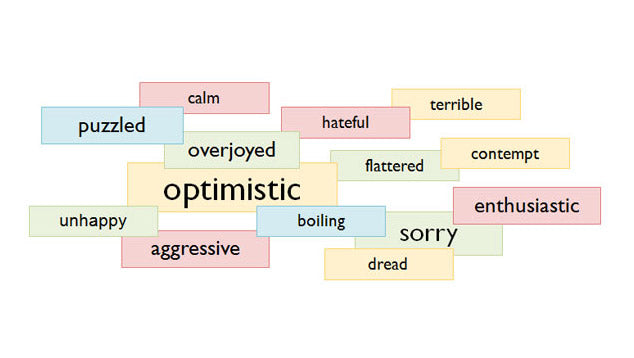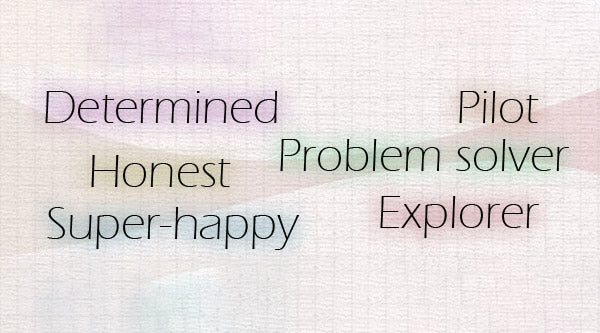Purpose
Knowing how we feel is part of our self-awareness. The more we are aware of our feelings, the better we can control our behaviours and understand those of others. This exercise helps delegates to become more aware of their emotions and learn to describe them. It also encourages them to think of ways to get to a target emotion, such as happiness.
Objective
Indicate how you feel now and find out as many emotions as you can.
What You Need
- Blank 3” by 5” cards.
Setup
PART 1:
- Run this exercise after a break as you are about to start a session.
- When the delegates come in, ask them “How do you feel?”. Invariably, most people would say they are fine.
- Once everyone is sited, explain that you just asked everyone if they were fine. Ask, “Why do we almost always say we are fine, even though when we are not?”
- Expand the conversation based on the responses you get. Use the following as example questions:
- “Do you find it easy to talk about your feelings?”
- “What makes it hard to talk about your feelings?”
- “Can you consciously shift your feelings from one to another?”
PART 2:
- Explain that it is beneficial to know the range of feeling a person can experience so you are aware of how else you can feel and how others might be feeling at any given moment. You can then take steps to change the way you feel.
- Place the blank cards as a stack for everyone to access.
- Ask all delegates to work together to identify as many emotions as they can and write one emotion on each card.
- Ask delegates to spread these cards on a table so everyone can see them. This helps them to avoid making duplicates.
- Encourage them to move around the table and get inspired by emotions already written down to find more emotions.
- Allocate about 10 minutes for this part.
PART 3:
- Collect the cards and place them upside down on the table, either as a stack or spread them out.
- Ask each delegate to pick two cards at random.
- One by one, ask delegate to reveal their cards and explain what it takes to get from one state to another. If they are negative emotions, what does it take to get to a positive state?
- After the explanation, encourage others to join and provide their answers as well.
- Repeat until everyone has participated.
- Follow with a discussion.
Timing
Explaining the Exercise: 0 minutes
Activity: 10 min PART 1 + 10 min PART 2 + 15 min PART 3 = 35 minutes
Group Feedback: 10 minutes
Discussion
Do you think you came up with many emotions? Was it easy? Are you surprised there are so many emotions? Was it easy to switch from one emotion to another?
List of Emotions
Here are some examples of emotions for your reference:
aggressive
angry
anticipation
awe
bad
boiling
bold
brave
calm
careful
chicken
clumsy
cold
comfortable
contempt
content
cowardly
crazy
curious
dejected
depressed
disgust
disappointment
down
dread
embarrassed
energy
enthusiastic
excited
fine
flattered
free
frightened
fury
glad
good
great
hateful
happy
helpful
helpless
hot
hurt
hysterical
important
impressed
indifferent
invisible
itchy
joy
joyful
kind
lazy
like an idiot
love
mad
mean
miserable
nauseated
needed
nice
nuts
overjoyed
optimistic
poor
proud
put-down
puzzled
rage
remorse
rich
sad
safe
scared
shocked
shy
sick
silly
sleepy
sly
smart
sorry
strong
stupid
surprised
submission
terrible
thankful
thin
tired
trust
unhappy
unimportant
unprotected
upset
warm
weak
wealthy
weird
well
Comments
By Mostafa Abdrabou @ Thursday, January 13, 2011 7:36 PM
Interesting.
By Lene Lee @ Friday, March 8, 2013 12:41 PM
Thank you for sharing. Great stuff for training !
By Chelsea Elm @ Tuesday, March 12, 2013 10:32 AM
Thanks Lene.
Soft Skills Training Materials
Get downloadable training materials
Online Train the Trainer Course:
Core Skills
Learn How to Become the Best Trainer in Your Field
All Tags
Training Resources for You

Course Design Strategy
Available as paperback and ebook

Free Training Resources
Download a free comprehensive training package including training guidelines, soft skills training activities, assessment forms and useful training resources that you can use to enhance your courses.

Our Comprehensive Guide to Body Language

Train the Trainer Resources
Get Insights - Read Guides and Books - Attend Courses
Training Materials
Get downloadable training materials on: Management Training, Personal Development, Interpersonal Development, Human Resources, and Sales & Marketing














Leave a comment
All comments are moderated before being published.
This site is protected by hCaptcha and the hCaptcha Privacy Policy and Terms of Service apply.